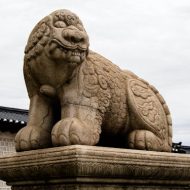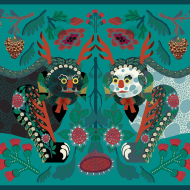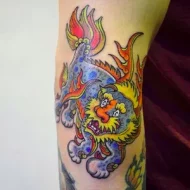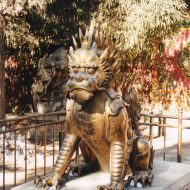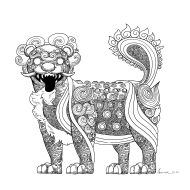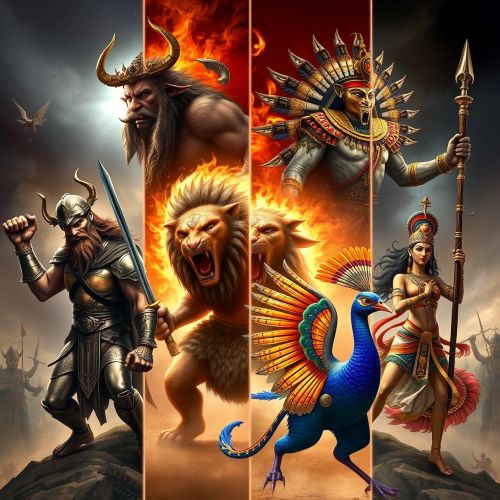Haetae : The Unicorn Lion
Listen
At a glance
| Description | |
|---|---|
| Origin | Korean Mythology |
| Classification | Animals |
| Family Members | N/A |
| Region | South Korea |
| Associated With | Justice |
Haetae
Introduction
In Korea, the xiezhi or haetae is a type of animal that lives in the frontier regions of Manchuria. According to historical records, it has a muscular body with sharp scales and a bell in its neck. In the Joseon dynasty, it was believed that it could protect people from fires. In addition, sculptures of haetae were made to ward off fires. The city of Seoul has a cartoon character named Haechi.
In addition to Korean mythology, the haetae also appears in Japanese and Chinese folklore. In Chinese mythology, it is called Xiezhi and served as an aid to Gao Yao, an ancient minister of law. Whenever someone committed a crime, the haetae would attack them with its horn.
Physical Traits
It was often depicted as a muscular beast with a likeness to a lion, goat, and unicorn. Indeed, in English language references to the haetae, it is sometimes known as a “unicorn lion”.
Other names
Besides Korean mythology, the xiezhi, or haetae, is also featured in Chinese and Japanese folk tales. In Japanese mythology, it is referred to as Kaichi.
Powers and Abilities
Aside from being able to pass judgment on those who commit crimes, haetae also serves as a guardian for people who are affected by natural disasters and fires. This has prompted many architects to create sculptures based on this belief.
Modern Day Influence
Since 2009, the haetae has been the official symbol of Seoul. It can be found in various locations throughout the city, such as parks, subway stations, and museums. It is also commonly used as a lantern during Korean festivals. As a mythological creature, the haetae is regarded as one of the most popular animals in Korean folklore.
The haetae is also associated with South Korea’s popular cartoon “The God of High School,” where a Charyeok called haetae appears. This beast, which is depicted as a dog-like creature with large teeth, has various powerful abilities.
Related Images
Frequently Asked Questions
What is lorem Ipsum?
I am text block. Click edit button to change this text. Lorem ipsum dolor sit amet, consectetur adipiscing elit. Ut elit tellus, luctus nec ullamcorper mattis, pulvinar dapibus leo.
What is lorem Ipsum?
I am text block. Click edit button to change this text. Lorem ipsum dolor sit amet, consectetur adipiscing elit. Ut elit tellus, luctus nec ullamcorper mattis, pulvinar dapibus leo.
What is lorem Ipsum?
I am text block. Click edit button to change this text. Lorem ipsum dolor sit amet, consectetur adipiscing elit. Ut elit tellus, luctus nec ullamcorper mattis, pulvinar dapibus leo.
What is lorem Ipsum?
I am text block. Click edit button to change this text. Lorem ipsum dolor sit amet, consectetur adipiscing elit. Ut elit tellus, luctus nec ullamcorper mattis, pulvinar dapibus leo.
What is lorem Ipsum?
I am text block. Click edit button to change this text. Lorem ipsum dolor sit amet, consectetur adipiscing elit. Ut elit tellus, luctus nec ullamcorper mattis, pulvinar dapibus leo.

